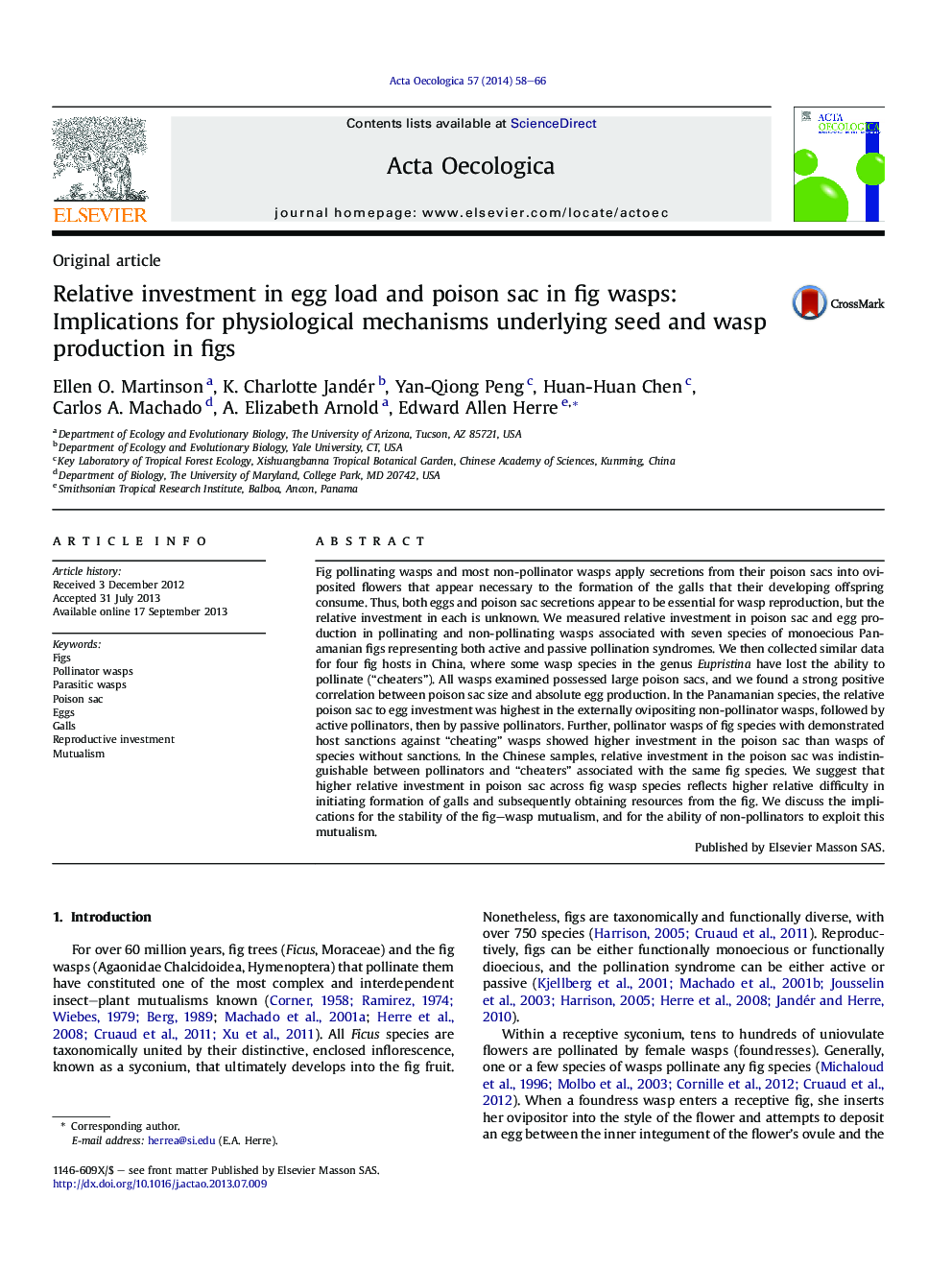| کد مقاله | کد نشریه | سال انتشار | مقاله انگلیسی | نسخه تمام متن |
|---|---|---|---|---|
| 4381039 | 1617714 | 2014 | 9 صفحه PDF | دانلود رایگان |
عنوان انگلیسی مقاله ISI
Relative investment in egg load and poison sac in fig wasps: Implications for physiological mechanisms underlying seed and wasp production in figs
ترجمه فارسی عنوان
سرمایه گذاری نسبی در بار تخم مرغ و سم در زنبورهای انگور: پیامدهای سازوکارهای فیزیولوژیکی تولید بذر و گوسفند در انجیر
دانلود مقاله + سفارش ترجمه
دانلود مقاله ISI انگلیسی
رایگان برای ایرانیان
کلمات کلیدی
موضوعات مرتبط
علوم زیستی و بیوفناوری
علوم کشاورزی و بیولوژیک
بوم شناسی، تکامل، رفتار و سامانه شناسی
چکیده انگلیسی
Fig pollinating wasps and most non-pollinator wasps apply secretions from their poison sacs into oviposited flowers that appear necessary to the formation of the galls that their developing offspring consume. Thus, both eggs and poison sac secretions appear to be essential for wasp reproduction, but the relative investment in each is unknown. We measured relative investment in poison sac and egg production in pollinating and non-pollinating wasps associated with seven species of monoecious Panamanian figs representing both active and passive pollination syndromes. We then collected similar data for four fig hosts in China, where some wasp species in the genus Eupristina have lost the ability to pollinate (“cheaters”). All wasps examined possessed large poison sacs, and we found a strong positive correlation between poison sac size and absolute egg production. In the Panamanian species, the relative poison sac to egg investment was highest in the externally ovipositing non-pollinator wasps, followed by active pollinators, then by passive pollinators. Further, pollinator wasps of fig species with demonstrated host sanctions against “cheating” wasps showed higher investment in the poison sac than wasps of species without sanctions. In the Chinese samples, relative investment in the poison sac was indistinguishable between pollinators and “cheaters” associated with the same fig species. We suggest that higher relative investment in poison sac across fig wasp species reflects higher relative difficulty in initiating formation of galls and subsequently obtaining resources from the fig. We discuss the implications for the stability of the fig-wasp mutualism, and for the ability of non-pollinators to exploit this mutualism.
ناشر
Database: Elsevier - ScienceDirect (ساینس دایرکت)
Journal: Acta Oecologica - Volume 57, May 2014, Pages 58-66
Journal: Acta Oecologica - Volume 57, May 2014, Pages 58-66
نویسندگان
Ellen O. Martinson, K. Charlotte Jandér, Yan-Qiong Peng, Huan-Huan Chen, Carlos A. Machado, A. Elizabeth Arnold, Edward Allen Herre,
